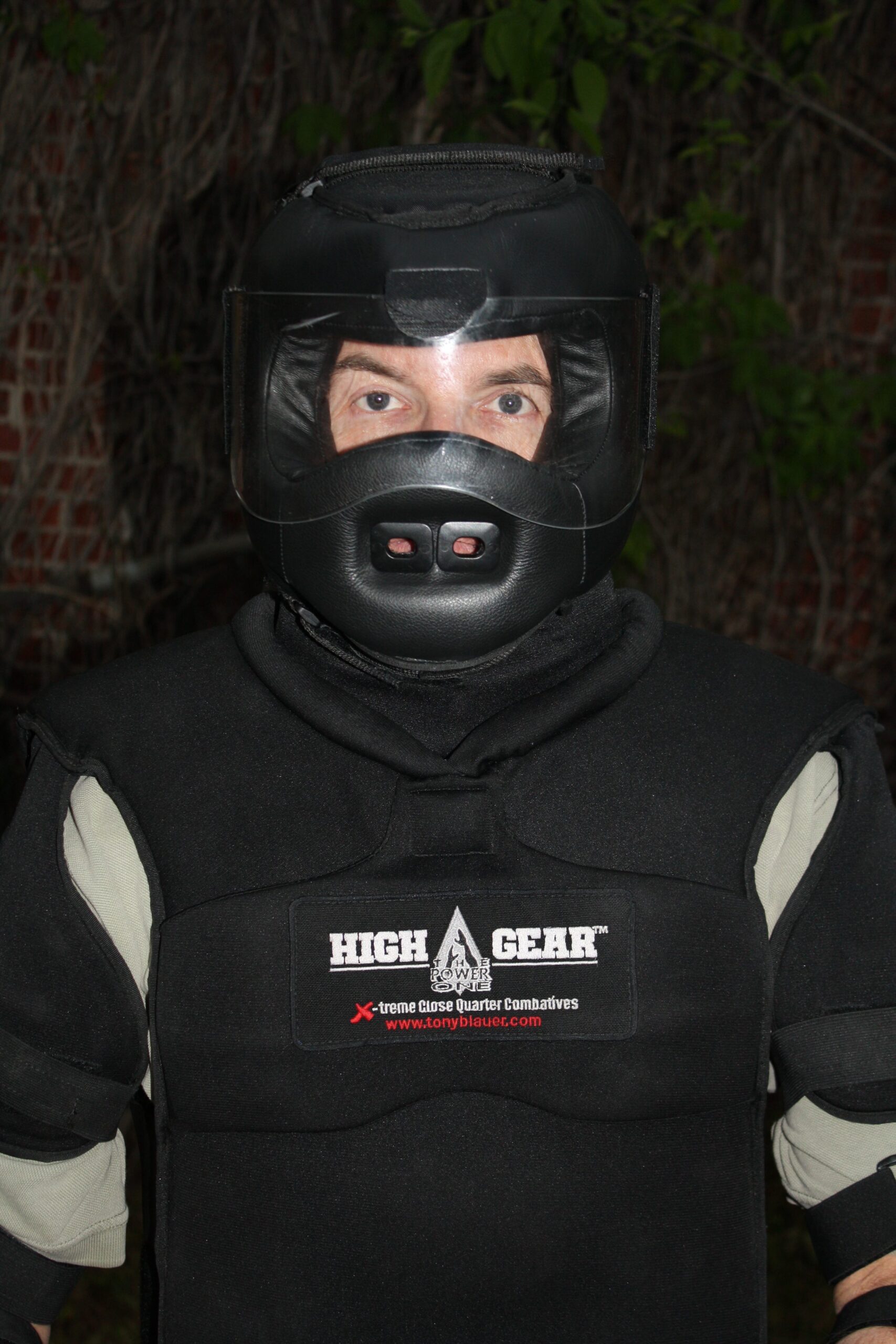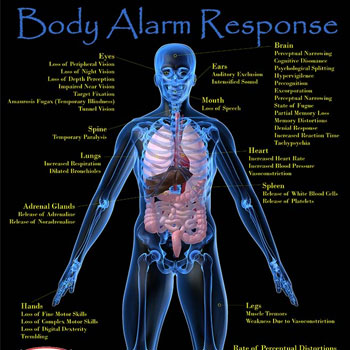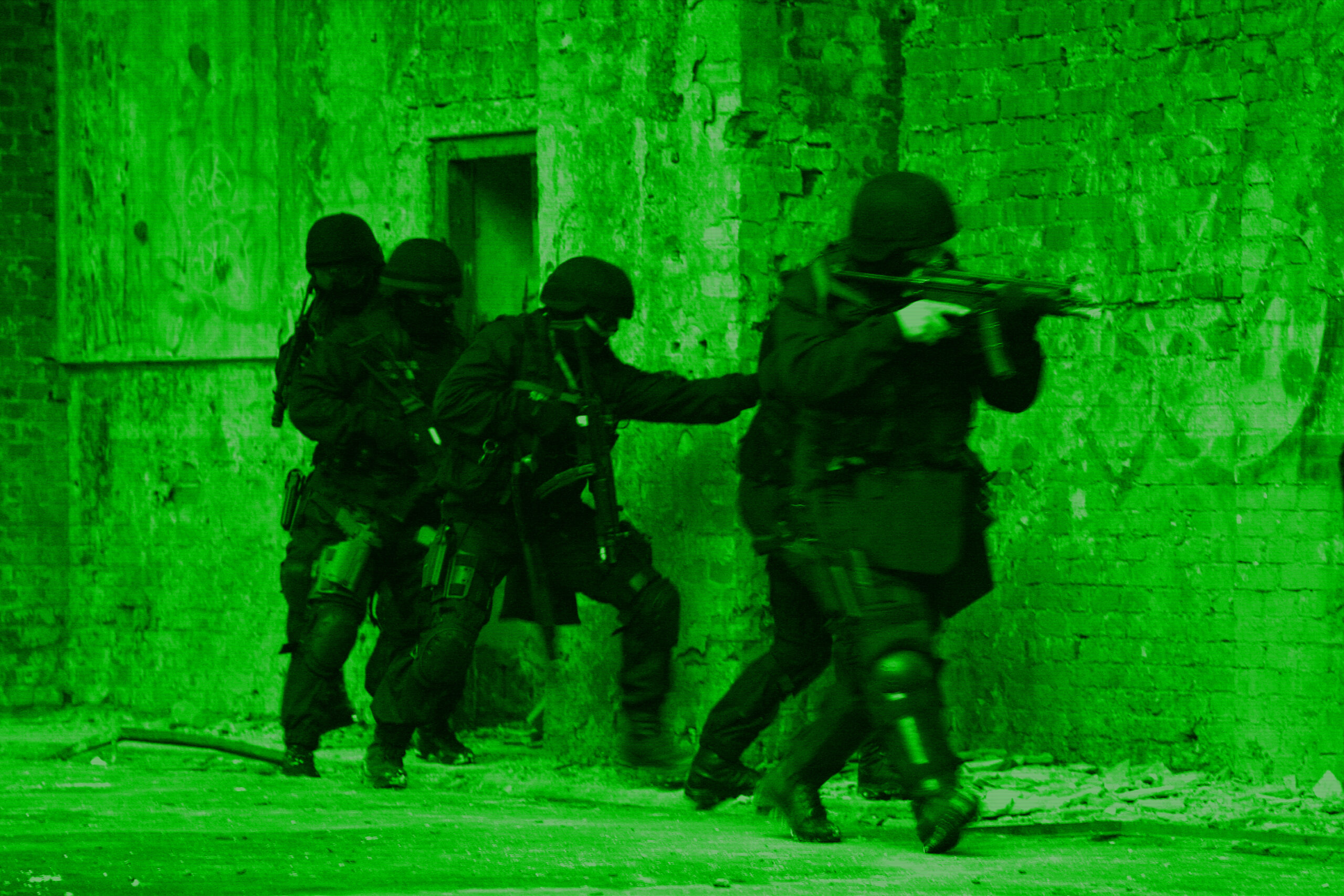
Stress Inoculation
During our research, we have discovered dozens of Body Alarm Responses. Since it is beyond the scope of these reports to examine them all, we will jump to the topic of controlling them and using them to our advantage.
If our techniques are based primarily on Gross Motor Movement, then we assume that a heart rate between 115 and 145 may actually help us. The initial adrenaline and noradrenaline dump into the bloodstream will give us energy to fight. If the heart rates rises above that, then we run the risk of most all of our techniques becoming inaccessible for us.
So, the real question becomes how do we manage our heart rate? Well there are only a few methods to do this:
- Lower stress levels
- Engage the mind
- Proper breathing
Let’s look first at lowering sress levels. At its most basic level, this is calming ourselves down. If we look at the situation from a practical standpoint and realize that we are trained for violence, then this may help alleviate fear. Remembering successful training encounters for this situation will go a long way in instilling confidence and thus lowering stress levels.
Engaging the mind in active planning of defense and/or escape will free it from the Fear Loop that dominates many people under stress. This is primarily a snowball effect where fear begets more fear until it is out of control. Planning kicks you out of this endless loop and avoids the dangerous spiral it produces.
The final method is proper breathing. Pregnant women during childbirth have used the Lamaze method of breathing for many years to lower anxiety levels. Qigong practitioners use breathing to promote health. Karateka often use sanchin breathing to build energy. It seems everyone focuses on some sort of breathing techniques. The question is whether this helps calm one down in real encounters and the answer is an emphatic “Yes!”
Many in the military arena refer to this as tactical breathing. It is a simple process where each step of the breathing process lasts for a four count. Here are the steps:
- Breath in through the nose for a four count.
- Hold your breath for a four count.
- Exhale through the mouth for a four count.
- Hold your breath for another four count.
- And, repeat at least two or three times.
It is that simple!
Law Enforcement and Military have been using this for years with much success. Martial Artists and even pregnant ladies have had the answers as well! Slowing your respiration rate has a direct effect on heart rate.
That is all there is to it!
Now, get started learning to breathe and go practice!









